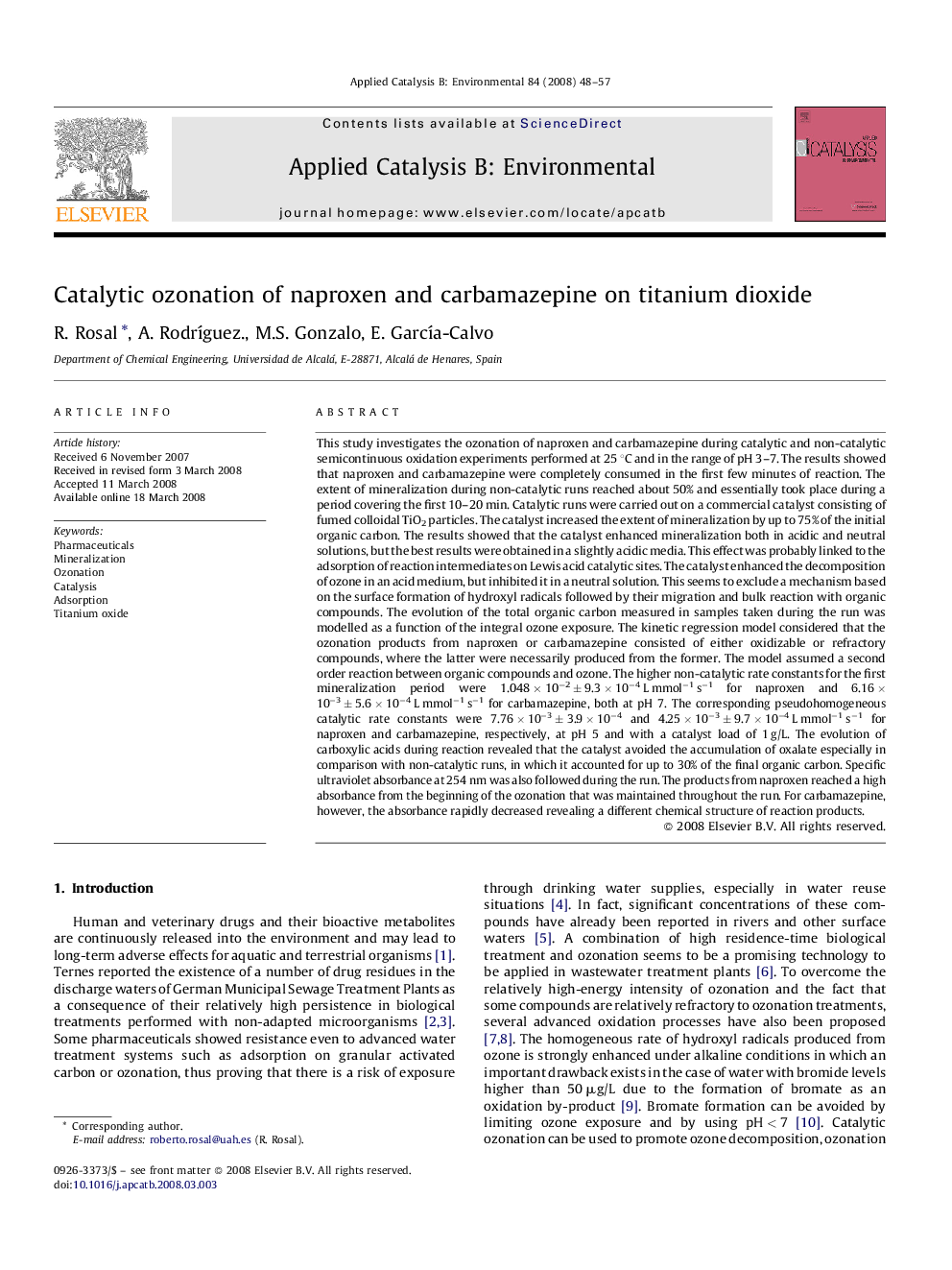| کد مقاله | کد نشریه | سال انتشار | مقاله انگلیسی | نسخه تمام متن |
|---|---|---|---|---|
| 47892 | 46485 | 2008 | 10 صفحه PDF | دانلود رایگان |

This study investigates the ozonation of naproxen and carbamazepine during catalytic and non-catalytic semicontinuous oxidation experiments performed at 25 °C and in the range of pH 3–7. The results showed that naproxen and carbamazepine were completely consumed in the first few minutes of reaction. The extent of mineralization during non-catalytic runs reached about 50% and essentially took place during a period covering the first 10–20 min. Catalytic runs were carried out on a commercial catalyst consisting of fumed colloidal TiO2 particles. The catalyst increased the extent of mineralization by up to 75% of the initial organic carbon. The results showed that the catalyst enhanced mineralization both in acidic and neutral solutions, but the best results were obtained in a slightly acidic media. This effect was probably linked to the adsorption of reaction intermediates on Lewis acid catalytic sites. The catalyst enhanced the decomposition of ozone in an acid medium, but inhibited it in a neutral solution. This seems to exclude a mechanism based on the surface formation of hydroxyl radicals followed by their migration and bulk reaction with organic compounds. The evolution of the total organic carbon measured in samples taken during the run was modelled as a function of the integral ozone exposure. The kinetic regression model considered that the ozonation products from naproxen or carbamazepine consisted of either oxidizable or refractory compounds, where the latter were necessarily produced from the former. The model assumed a second order reaction between organic compounds and ozone. The higher non-catalytic rate constants for the first mineralization period were 1.048 × 10−2 ± 9.3 × 10−4 L mmol−1 s−1 for naproxen and 6.16 × 10−3 ± 5.6 × 10−4 L mmol−1 s−1 for carbamazepine, both at pH 7. The corresponding pseudohomogeneous catalytic rate constants were 7.76 × 10−3 ± 3.9 × 10−4 and 4.25 × 10−3 ± 9.7 × 10−4 L mmol−1 s−1 for naproxen and carbamazepine, respectively, at pH 5 and with a catalyst load of 1 g/L. The evolution of carboxylic acids during reaction revealed that the catalyst avoided the accumulation of oxalate especially in comparison with non-catalytic runs, in which it accounted for up to 30% of the final organic carbon. Specific ultraviolet absorbance at 254 nm was also followed during the run. The products from naproxen reached a high absorbance from the beginning of the ozonation that was maintained throughout the run. For carbamazepine, however, the absorbance rapidly decreased revealing a different chemical structure of reaction products.
Journal: Applied Catalysis B: Environmental - Volume 84, Issues 1–2, 25 October 2008, Pages 48–57